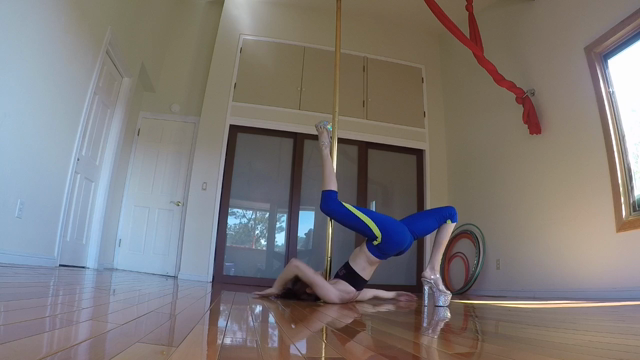Floor Shoulder Mount combo

COMBO – INTERMEDIATE This is a great way to practice your shoulder stand pike and to condition for full shoulder mounts. This lesson has several options so be sure to stay within your level of flexibility, and focus on keeping nice straight legs. Here’s a list of direct links to all of the related videos.


I have a very solid shoulder stand pike but my collar bones are very protruding and just pulling up my legs the pole puts too much pressure right on the bone. I’ve tried adjusting my position but no luck. Are there some bone structure types that just can’t do shoulder mounts?
The pole should be very high up near the neck, not out towards the shoulder. Look closely at the shoulder mount lesson for a visual on shoulder placement. There should be no contact with the bone in this move because you’re using the floor and arms more for leverage than the shoulder on the pole. For these moves the shoulder doesn’t need to press hard into the pole.
Thanks Verna! Yes, I watched the shoulder mount video carefully and was able to do it without hitting the bone. I guess I was afraid of getting too close to the carotid artery in the neck.
Darn spell check, I meant Veena!
The carotid artery is far deeper into the crease of the neck and shoulder than you might think, you’d have to by pass muscle tissue too! And you’re not pushing into the side of the neck, the pole is still pushing into only the Upper Trapezes, not the neck. 🙂 You’re never ON the neck, but in the crease between neck and shoulder. You have more risk of injury placing the pole on the edge of the shoulder.
My Upper Trapeze are tight from pull ups and spins. This exercise gave them a much needed massage LOL
Very Cute!